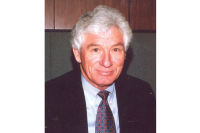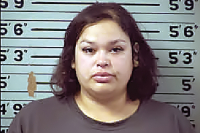New light on Salem Witch Trials
 Back in 1954, when I was a freshman at Western Carolina Teachers College (now WCU), the college’s drama department launched a production of The Crucible by Arthur Miller.
Back in 1954, when I was a freshman at Western Carolina Teachers College (now WCU), the college’s drama department launched a production of The Crucible by Arthur Miller.
My English instructor told her classes that the play, allegedly about the notorious Salem witch trials, was “really” about the McCarthy hearings, which were called “The UnAmerican Activities Committee.” McCarthy had originally set out to identify and expose “200 known communists” in the military in 1950 but eventually widened his search to include Hollywood.
The hearings were televised (April-June, 1954). McCarthy gave a list of accused; a list in which hundreds of Hollywood’s actors and writers had been branded “communists.” Many were imprisoned and/or lost their jobs as friends turned on friends, accusing each other in a desperate attempt to save themselves ...in much the same manner as the people of Salem did in 1692.
I managed to get a minor role as Rev. Hale and thoroughly enjoyed the rehearsals and the productions, although I managed to anger the director in one production in which I mispronounced a word. I had a dramatic speech in which I held forth on the plague of events in Salem during the hangings. Someone was burning the fields of Salem farmers who had been accused of witchcraft.
“The stench of burning crouch hangs everywhere,” I proclaimed. It got a laugh.
In the 60 years that has passed since The Crucible, the names are still with me. Tituba, the Jamaican slave who survived by confessing. She apparently had a talent for storytelling and she held the attention of her accusers as she described how she flew to midnight meetings on her broom. She also pointed to the poor souls who flew with her. Now, 60 years later, I remember many of the names of the accused, their accusers and their neighbors: Martha Cory, Sarah Good, Giles Cory, John Proctor, Martha Carrier, Abigail Williams, Judge John Hathorne, Rev. Cotton Mather, Dorcas Hoar. These are real people. Some are ignorant, vicious, given to falsehood, and capable of bearing a grudge for a lifetime. All are frightened and some will hang.
Related Items
Stacy Schiff, the author of The Witches, is also the author of my favorite biography, Cleopatra, which won a Pulitzer. In The Witches she takes her extraordinary gift for painstaking research and turns the results into a kind of murder mystery in which the ultimate question is not “who?” but “why.”
In 1692, the Massachusetts Bay Colony executed 14 women, five men and two dogs for witchcraft. The accusations began in January. The first hanging took place in June and the last in September, leaving the people of Salem stunned by the consequences. What have we done? Why did we do it? Schiff devotes almost 500 pages to answering those questions. Among the victims were Harvard educated ministers.
There were what the lawyers refer to as “mitigating circumstances.” Indian attacks were still common and many of the residents of Salem had survived the horrors of nighttime attacks in which they saw their parents and/or their brothers and sisters scalped and murdered. The forest that surrounded them was filled with incomprehensible sounds and wolves prowled the streets at night. The weather proved unpredictable with winter storms and freezing temperatures.
It is disheartening to learn that in the years following the trials, many of the accusations were prompted by greed as neighbors denounced neighbors in the hope of acquiring additional land and property. Many of the accused were either wealthy with hundreds of acres of fertile land and houses that rivaled English estates, or they were beggars and poverty-stricken widows. In addition, many of the families resembled clans, which struggled for control of political positions. Also, just beneath the surface, there were bitter grudges and unpaid debts that had rankled for generations. The Colony was filled with ministers who were without churches or served as pastors to churches that failed to pay their salaries, which was usually paid in firewood and hay. Lawsuits were common and churches spent much time in wrangling and discontent.
The research in The Witches is amazing. Schiff delves into family histories and compares the Salem trials to similar witch hunts in Europe (especially in Germany and Scotland). It is noted that Salem never condemned any of the convicted to burning at the stake. However, Giles Corey died by being pressed to death by having stones placed on him as he lay on the ground. (Corey is the only victim in American history to die in this manner.) In reviewing this book, I found it necessary to speak in generalities since the information is so extensive.
Somewhere between 144 and 185 were named in 25 villages and towns before the hysteria abated. According to the testimony in all of the courts, more than 700 witches flew about Massachusetts. The youngest of the witches was 5, and the eldest was nearing 80. In one instance, a daughter accused her mother, who, in turn accused her mother who accused a neighbor and a minister. In the community of Andover, one of every 15 people living there was accused.
But I am neglecting the most important factor in this book. That is, the accusers. They were mostly children who were “possessed.” When they demonstrated evidence of being possessed, they were given to an amazing variety of actions: they took fits, fell to the floor and writhed, barked like dogs and galloped about the courtroom at the bidding of invisible tormentors. They often claimed to be bitten by witches and would exhibit the bites teeth marks. When their behavior became well known, the judges who conducted the investigations took them to the homes of the accused to see how the children behaved. Why did they do it? Answers range from simple boredom to mental illness and as many of them admitted after the trials, once they started, they were unable to stop. Witnesses who kept accounts of the trials often noted that the mayhem created by the children made it impossible to conduct the trials.
One interesting bit of literary history — the judge who appeared all too eager to hang the accused, Judge John Hathorne was held accountable for the tragic consequences. His descendants actually changed the spelling of their name in an attempt to distance themselves from Hathorne. In fact, the old man’s great-grandson, Nathaniel Hawthorne is an example.
(Gary Carden is a writer and storyteller who lives in Sylva. He can be reached at This email address is being protected from spambots. You need JavaScript enabled to view it..)









